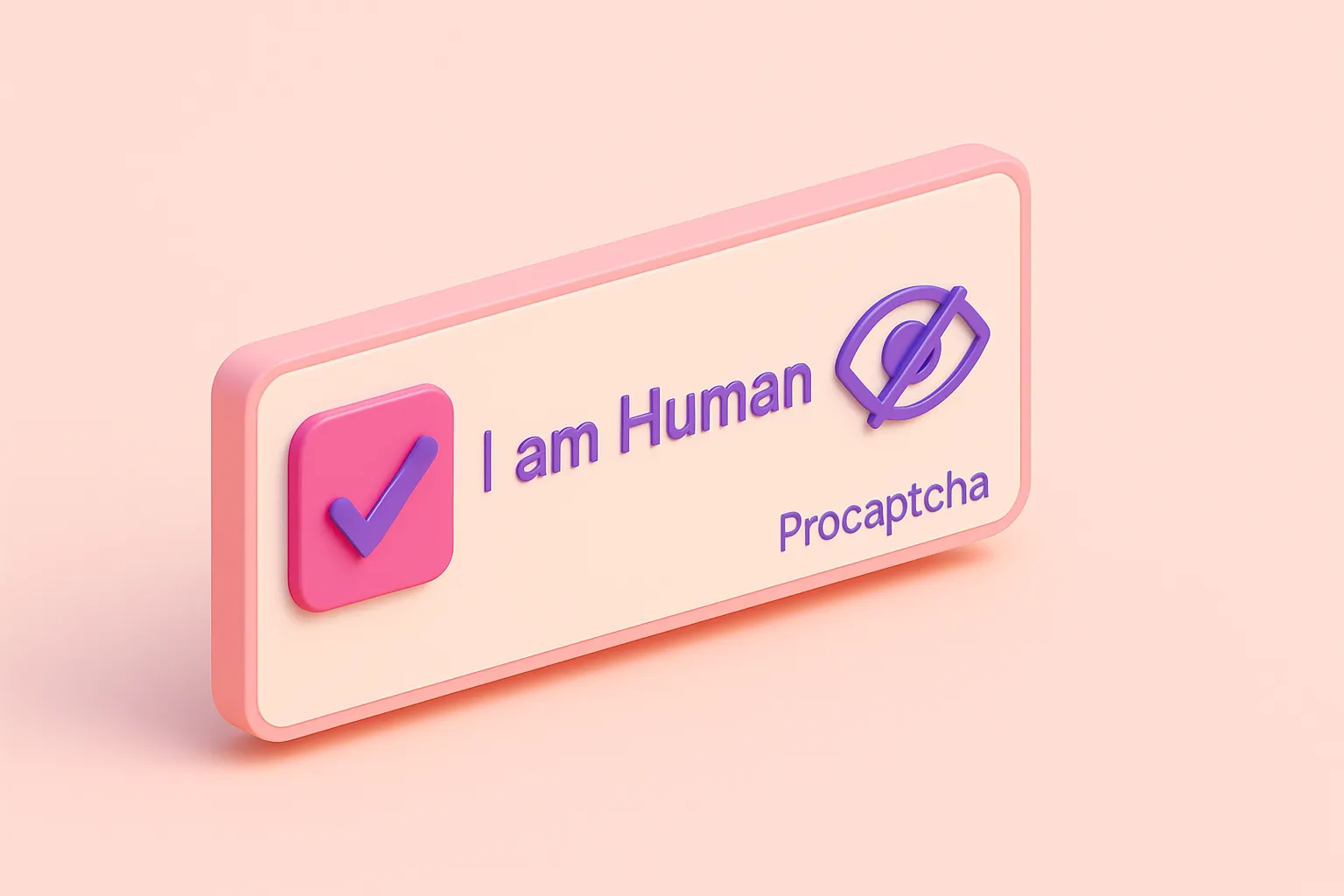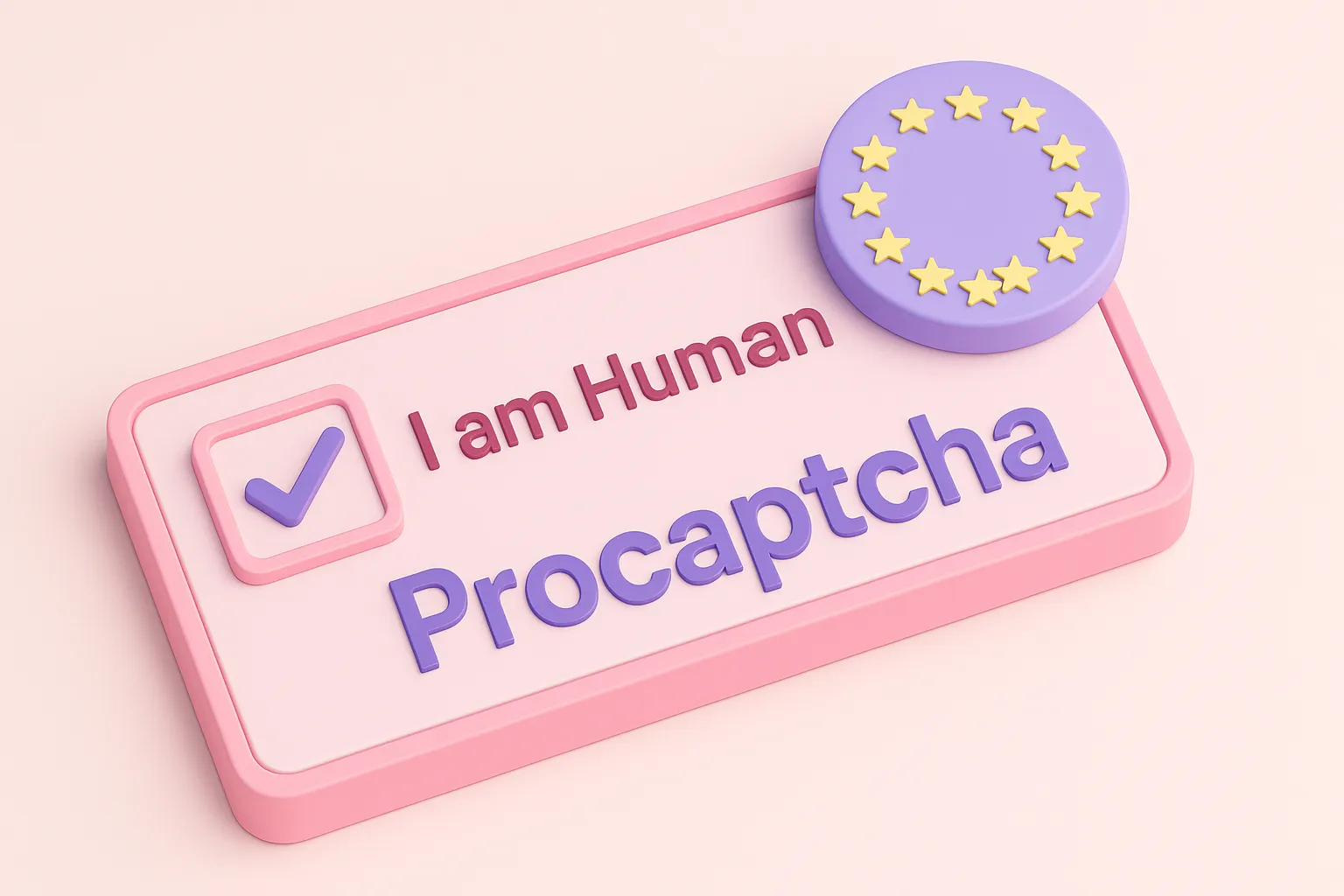How Does CAPTCHA Collect User Data? The Reality
Did you know that every time you solve a CAPTCHA, you might be helping AI learn to drive or training machines to recognize objects? It's true! CAPTCHAs aren't just security tools - they're also data collection systems that track user interactions.
But how does CAPTCHA collect user data, and what happens to it? The reality behind bot protection might surprise you - let's dive in!
In this article, we will:
- See how CAPTCHA collects and uses your data
- Protect your privacy with next-gen CAPTCHAs
- Learn how CAPTCHAs secure your online activity
CAPTCHA's Hidden Data Harvest: What You're Sharing When You Prove You're Human
Every time you solve a CAPTCHA, you're not just proving you're human - you're also sharing valuable data without even realizing it. CAPTCHA systems use advanced tracking mechanisms to analyze your behavior, device details, and even past browsing history.
Here's how CAPTCHA collects and processes user data:
Interaction Tracking: Your Digital Decisions Under the Microscope
Every choice you make when solving a CAPTCHA creates valuable data points that companies can collect and analyze. Your specific selections reveal patterns unique to human users that can be studied and monetized.
When you identify traffic lights, crosswalks, or storefronts in image-based CAPTCHAs:
- Each correct or incorrect selection is recorded
- Your recognition patterns help train AI systems
- The sequence of your choices creates behavioral profiles
- Response consistency across multiple tests is analyzed
For text-based CAPTCHAs, the system tracks:
- Character recognition accuracy
- Typing patterns and corrections
- Response time for each character entered
These interaction patterns create a digital signature that not only verifies your humanity but also builds a profile of your cognitive processing and decision-making styles.
Behavioral Analysis: Your Unconscious Movements Tell a Story
Image: https://pixabay.com/illustrations/shopping-cart-process-shop-3407232/
 Beyond what you consciously click or type, CAPTCHAs are studying how you move and behave during the verification process. This behavioral analysis captures subtle human traits that bots typically can't replicate convincingly.
Beyond what you consciously click or type, CAPTCHAs are studying how you move and behave during the verification process. This behavioral analysis captures subtle human traits that bots typically can't replicate convincingly.
The system records detailed metrics about:
- Mouse movement trajectories that reveal natural human hand-eye coordination
- Hover patterns when you pause to consider options
- Scrolling behavior as you navigate the challenge
- Typing rhythm and cadence unique to human users
- Correction patterns when you make and fix mistakes
- Dwell time on different elements of the CAPTCHA
Google's advanced reCAPTCHA systems are particularly sophisticated, analyzing microscopic behavioral cues that most users aren't even aware they're exhibiting. Your "humanness score" is partially determined by these unconscious movements that create a behavioral fingerprint almost as unique as your actual fingerprint.
Device & Browser Fingerprinting: Your Technical Identity Exposed
While you're focused on solving the CAPTCHA puzzle, the system is simultaneously gathering technical data about your digital presence. This technological footprint creates a profile that can potentially identify you across websites and sessions.
CAPTCHA systems typically collect:
- IP address that reveals your approximate location and internet service provider
- Operating system details, including version and settings
- Browser information such as type, version, and installed plugins
- Screen resolution and color depth
- Hardware configurations like processor type and device model
- Cookie data that links your current session to previous activities
- Language preferences set in your browser
The combination of these technical parameters creates a highly specific digital fingerprint that can identify your device with remarkable accuracy, even without traditional tracking cookies.
User Activity & Context: Your Digital History in Focus
Modern CAPTCHAs don't exist in isolation - they're often integrated with broader ecosystems that have access to your previous online behaviors. This contextual awareness allows the system to build a more comprehensive profile of your digital identity.
These systems analyze:
- Previous CAPTCHA interactions across different websites
- Account activity if you're logged into services like Google
- Browsing patterns, when integrated with analytics platforms
- Device reputation based on historical security assessments
- Time-based activity patterns showing when you're typically online
- Geographic consistencies or anomalies in your access locations
Google's reCAPTCHA is particularly powerful in this regard, as it can potentially access your entire Google account history to determine if you behave like a legitimate user or a potential threat. This means your Gmail usage, YouTube viewing habits, and Google search patterns may all factor into your CAPTCHA assessment.
Passive Monitoring: Being Watched Without Knowing
Perhaps most concerning of all, modern bot detection like Google's reCAPTCHA v3 operate entirely in the background without any direct user interaction. These systems silently observe your behavior throughout your entire website visit, often tying it to external services that track other parts of your life. This allows for monetization of your data across the globe, without your permission.
With passive monitoring:
- Your every movement on the page is potentially tracked and analyzed
- The system assigns a risk score to your behavior without your knowledge
- No explicit consent is required for this monitoring
- You have no opportunity to opt out while still using the website
- Your data contributes to AI training without your active participation
This passive monitoring represents a significant evolution in CAPTCHA technology - moving from active verification to continuous surveillance that builds detailed profiles of user behavior across the web.
The data harvested through these sophisticated mechanisms serves multiple purposes beyond simple bot detection. It trains machine learning systems, improves object recognition algorithms, enhances maps and location services, and creates valuable datasets that can be monetized in various ways.
Reclaim Your Digital Privacy: Next-Generation CAPTCHAs That Respect Your Data
In a digital landscape where traditional CAPTCHAs function as sophisticated data collection tools, a new wave of privacy-focused alternatives is emerging. These innovative technologies aim to verify human users without compromising personal data or creating detailed behavioral profiles.
Minimalist Data Collection: Less is More
Modern privacy-preserving CAPTCHAs operate on a fundamental principle: collect only what's absolutely necessary to distinguish humans from bots. Unlike conventional systems that harvest extensive behavioral and device data, these alternatives implement several technical approaches to minimize data collection:
- Zero-knowledge proofs allow verification without revealing underlying data
- Ephemeral processing analyzes user inputs in-browser without sending raw data to servers
- Localized computation keeps sensitive interactions on the user's device
- Minimal data transfer sends only verification results, not interaction details
- Time-limited storage immediately discards data after verification completes
These techniques provide effective security while dramatically reducing the digital footprint left by each CAPTCHA interaction. For users concerned about privacy, the difference is substantial - verification without surveillance.
Proof-of-Work vs. Behavioral Analysis: Two Paths to Privacy
Image: https://pixabay.com/illustrations/bullet-round-ball-binary-ball-hand-457334/
 Privacy-focused CAPTCHAs typically follow one of two technological approaches, each with distinct privacy implications:
Privacy-focused CAPTCHAs typically follow one of two technological approaches, each with distinct privacy implications:
Proof-of-Work Systems
These CAPTCHAs require your device to solve complex mathematical puzzles that are:
- Challenging for automated systems but easy for modern browsers
- Completely device-based with minimal server interaction
- Free from behavioral tracking or personal data collection
- Designed to verify computational investment rather than human behavior
The proof-of-work approach shifts verification from "who you are" to "what your device can do", eliminating the need to analyze personal behavioral patterns. Your privacy remains intact because the system doesn't need to know anything about you - it only needs to verify that your device has dedicated resources to solving the challenge.
This creates a more secure CAPTCHA code that protects user privacy while still effectively distinguishing between humans and bots.
Privacy-Enhanced Behavioral Analysis
Some modern CAPTCHAs still use behavioral analysis but with crucial privacy enhancements:
- Local processing analyzes behavior on your device, not on remote servers
- Anonymized metrics remove personally identifiable aspects before transmission
- Aggregated analysis looks at group patterns rather than individual behaviors
- Transparent disclosure clearly communicates what data is used and why
These systems achieve a balance between security and privacy by analyzing just enough behavioral signals to verify humanity without building comprehensive user profiles.
Privacy-by-Design: Building Protection from the Ground Up
The most effective privacy-preserving CAPTCHAs aren't just traditional systems with added privacy features - they're built from the ground up with privacy as a core principle. This "privacy-by-design" approach includes:
- Data minimization as a fundamental architectural requirement
- Purpose limitation that restricts data use to verification only
- Storage limitations that prevent long-term data retention
- Processing transparency that makes verification methods open to scrutiny
- User control options allow individuals to choose verification methods
When privacy considerations are baked into the design from the beginning, protection becomes a feature, not an afterthought. These systems demonstrate that effective security doesn't require invasive surveillance - it just requires smarter design.
As users become increasingly concerned about digital privacy, demand for privacy-preserving CAPTCHAs continues to grow. Website owners now have viable alternatives that provide robust security without turning every user verification into a data collection opportunity.
Beyond the Checkbox: How CAPTCHAs Protect Your Digital Experience in Critical Moments
Image: https://pixabay.com/illustrations/privacy-policy-laptop-gavel-7165187/
While most users encounter CAPTCHAs during simple logins, these security tools play a vital role in specialized high-risk scenarios that demand enhanced protection. Here's how they work in critical applications:
Securing the Digital Storefront: E-commerce Protection
E-commerce platforms face sophisticated threats that standard security measures can't address. Online stores are prime targets for automated attacks, including:
- Inventory hoarding bots that snatch limited-edition products
- Price scraping tools that harvest competitive data
- Promotional offer exploiters using fake accounts
- Fraudulent order submission systems
Modern e-commerce CAPTCHA implementation uses contextual risk assessment that dynamically increases verification difficulty only when suspicious patterns appear. This maintains a smooth experience for legitimate customers while creating targeted friction for potential threats.
Fortifying High-Value Form Submissions
Financial applications, government services, and insurance claims require specialized protection beyond standard verification. These advanced implementations include:
- Progressive disclosure CAPTCHAs that increase challenge difficulty at critical stages
- Multi-stage verification combining different security approaches
- Time-delay mechanisms preventing rapid-fire submissions
- Invisible validation layers working alongside visible challenges
These systems create defense-in-depth protection proportional to the value of the protected resource.
Guarding Account Creation Systems
Account creation is a critical vulnerability, as automated systems attempt to establish footholds within services. * Strategic CAPTCHA deployment* helps prevent:
- Mass creation of fake accounts for spam or fraud
- Automated trial signups and promotional abuse
- Creation of sleeper accounts for later attacks
Effective protection combines visible challenges with invisible verification measures like * *device fingerprinting**, time-analysis factors, and cross-platform verification to create a robust defense without compromising legitimate user experience.
Keeping Online Conversations Human
Comment sections and discussion forums require specialized approaches that balance community engagement with security. Effective strategies include:
- First-time commenter verification that only challenges new participants
- Reputation-based exemptions for established community members
- Trigger-based challenges that activate when patterns suggest automation
- Content-aware verification that increases security for comments with links
These systems create a tiered security model where verification requirements adapt to user history and behavior.
Protecting Email and Signup Flows
Email verification is a critical security checkpoint in user onboarding. Strategic CAPTCHA implementation within these flows includes:
- Pre-verification challenges preventing automated email triggers
- Time-limited verification links that expire quickly
- Device consistency checks between signup steps
- Behavioral verification throughout the registration sequence
These measures create a comprehensive verification journey rather than a single checkpoint, making automated attacks significantly more difficult while maintaining reasonable friction for real users.
Privacy Implications Of CAPTCHA Verification Processes
CAPTCHAs, once seen as simple security tools, have evolved into powerful data collection mechanisms that track user behavior, device details, and browsing history. While they help prevent automated threats, they also raise serious privacy concerns.
Thankfully, privacy-focused alternatives like dynamic proof-of-work CAPTCHAs offer secure authentication without invasive tracking. As digital privacy becomes a growing concern, it's time to adopt solutions that balance security with user rights.
Related Posts to How Does CAPTCHA Collect User Data? The Reality

Which Security Risks Does CAPTCHA Pose: Critical Flaws?
Tue, 25 Mar 2025

What do Artists do to Prevent Ticket Scalping?
Wed, 02 Apr 2025

What is the Future of CAPTCHA and Online Privacy
Thu, 03 Apr 2025

What Privacy Laws Should CAPTCHA Providers Comply With
Sun, 06 Apr 2025

How to Make CAPTCHA GDPR Compliant & Protect Privacy
Tue, 08 Apr 2025

How Do Scalpers Get Tickets Before Selling Them
Wed, 09 Apr 2025

How to Integrate CAPTCHA Without Violating User Rights
Sat, 12 Apr 2025

How to Choose a GDPR-Friendly CAPTCHA for WordPress
Fri, 18 Apr 2025

🎫 Preventing Ticket Bots - The Battle for Fair Access
Sun, 02 Nov 2025

Survey Companies Are Having Their Data Compromised by AI Bots
Tue, 25 Nov 2025
Start for free today. No credit card required.

